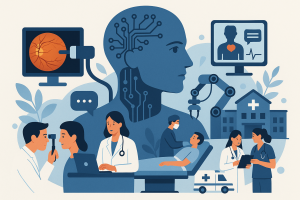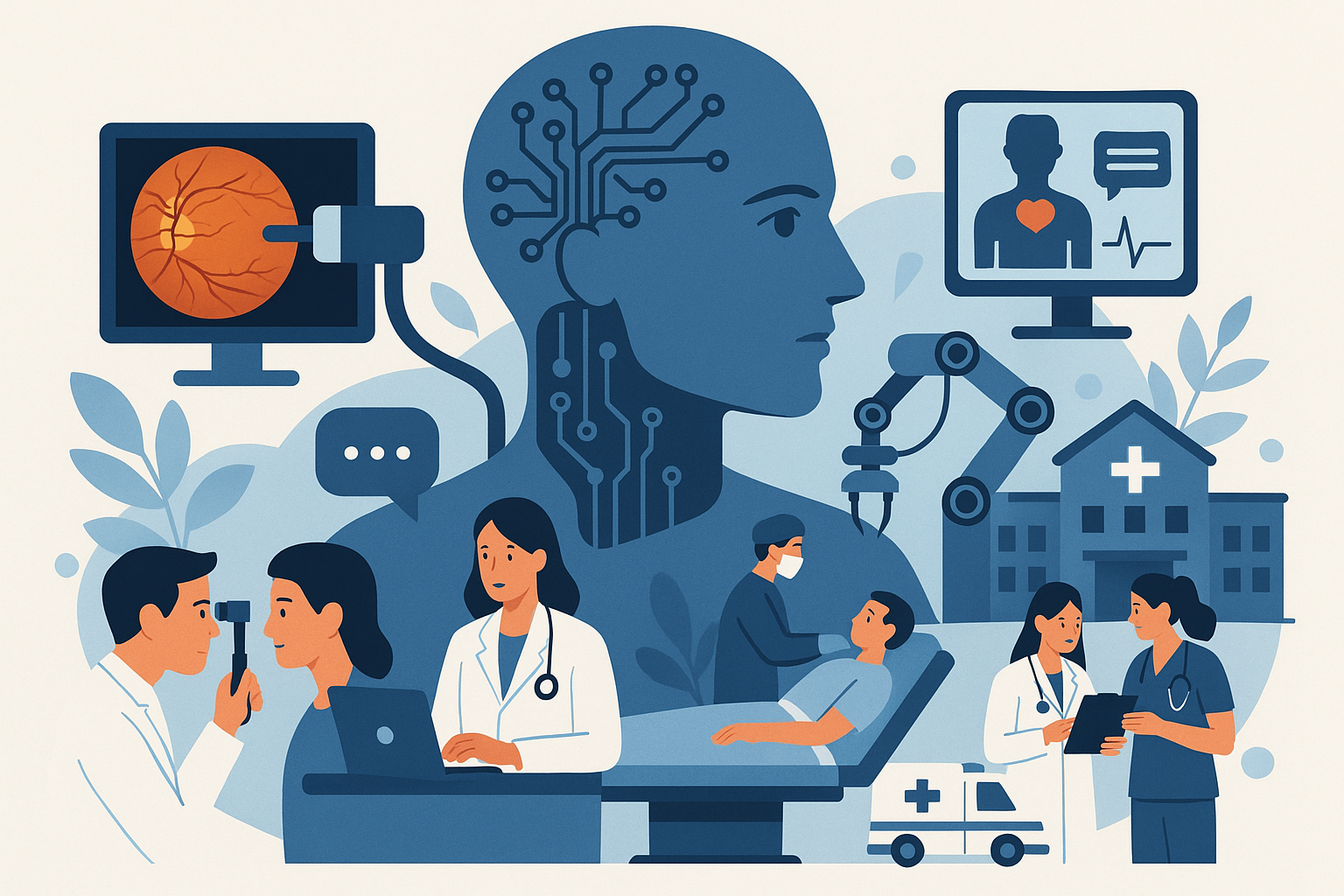The promise of AI and Generative AI in Healthcare is enormous – it’s like giving doctors and researchers superpowers to sift through data and spot patterns no human could catch alone.

Generative AI is even helping create new medical content, like suggesting molecular designs for new drugs or conversing with patients as a chatbot.
Let’s take a look at some key applications of AI in healthcare.
Key applications of AI and Generative AI in Healthcare
Medical Imaging and Diagnostics:
AI systems can examine X-rays, MRIs, and CT scans with high accuracy, helping radiologists find problems faster. For example, an AI model for stroke patients’ brain scans was twice as accurate as human experts at identifying issues and even gauged when a stroke occurred. AI can also spot subtle fractures that doctors might miss, acting as a second pair of eyes to improve diagnosis.
Drug Discovery and Research:
Pharma companies use AI to identify promising drug candidates much faster. AI models can analyze vast chemical datasets to suggest new molecules for
treatment. This cuts development time – AstraZeneca reported that generative AI and machine learning have helped reduce some drug development lead times by 50%, and even cut the time to prepare certain research documents by over 70%.
Virtual Health Assistants:
Generative AI powers health chatbots that answer patient questions or triage symptoms. In 2024 many hospitals began adopting AI chatbots to provide 24/7 support. These bots, using advanced language models, can converse naturally and direct patients to care if needed. They help handle routine inquiries so human staff can focus on critical cases.
Personalized Medicine:
AI can analyze an individual’s medical history, genetics, and lifestyle to suggest tailored treatments. This might mean more precise medication dosages or earlier interventions. For instance, new AI models can predict the risk of diseases like Alzheimer’s years before symptoms show by spotting hidden patterns in patient data. Such early warnings enable preventive care specific to each patient.
Real-world impact
Real-world deployments are growing. Doctors at some hospitals now use AI support tools for diagnosing conditions from retinal scans or skin lesions.
Healthcare companies like Google’s DeepMind have created algorithms to detect eye diseases and predict acute kidney injury from records.
IBM’s Watson (now evolved into other tools) has been used to recommend cancer treatments by analyzing medical literature.
Concerns and Future trends
That said, healthcare has adopted AI a bit slower than some industries. A World Economic Forum report noted healthcare’s AI adoption is “below average” compared to other sectors. Concerns about accuracy, data privacy, and the need for clinical validation make doctors appropriately cautious. Regulators require thorough testing to ensure patient safety. Challenges like bias in AI (if trained on non-diverse data) and the “black box” nature of some models need addressing.
Still, the trend is clear – from AI-assisted robotic surgery to AI systems managing hospital logistics, the coming years will see even deeper integration of AI in healthcare. It’s likely to save lives by catching illnesses earlier and make care more accessible, especially in areas with doctor shortages.
Real-World Examples
Case in point:
The Mayo Clinic has been piloting an AI chatbot based on generative models to assist physicians with answering patient questions using medical literature.
And in the UK, the National Health Service trialed an AI system that correctly predicted hospital admission needs for ambulance callers 80% of the time, showing AI could help allocate medical resources more efficiently.
Conclusion
The trajectory is exciting – if we proceed carefully and ethically, AI might soon help bridge healthcare gaps for millions around the world and help save many more lives.
